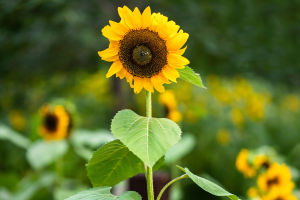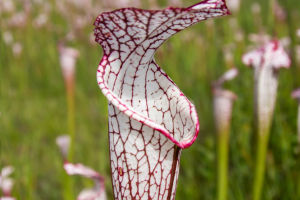When it comes to growing plants, hydroponics is one of the most exciting and efficient methods. Not only does it require less space and soil, but it also offers the opportunity for year-round gardening.
However, just like any plant, hydroponic plants need proper care to ensure they thrive. We're here to share some practical tips on how to scientifically manage hydroponic plants to ensure their healthy growth.
Understanding Hydroponics
Hydroponics is a method of growing plants without soil, using mineral nutrient solutions in water. The roots of the plants are immersed in the solution, where they absorb nutrients directly. This system can be much more efficient than traditional soil gardening, as the plants have direct access to the nutrients they need, and water usage is more controlled.
However, managing a hydroponic garden isn't as simple as just setting up the system and hoping for the best. There are a few key factors we need to consider to make sure our plants stay healthy and grow strong.
Choosing the Right Hydroponic System
There are several types of hydroponic systems to choose from, including wick systems, deep water culture, aeroponics, and nutrient film technique. Each has its own set of benefits and challenges, so it's important to select one that suits your space, the type of plants you want to grow, and how much time you can dedicate to maintenance.
For beginners, deep water culture (DWC) is often recommended. In this system, plants' roots are suspended in a nutrient-rich solution, making it easier for the plants to access nutrients and oxygen.
Water Quality and pH Balance
One of the most important factors in hydroponic gardening is water quality. Since the plants depend entirely on the water for their nutrients, it's essential to maintain a clean, well-balanced solution. Make sure the water you use is free from contaminants like chlorine or hard minerals, which can hinder plant growth.
In addition, pH levels play a critical role. Most hydroponic plants thrive in water with a pH between 5.5 and 6.5. Regularly check and adjust the pH using a pH meter and pH adjusting solutions. If the pH is off, your plants may have difficulty absorbing essential nutrients, leading to poor growth.
Nutrient Solution: The Right Mix
Plants need a mix of macronutrients like nitrogen, phosphorus, and potassium, as well as micronutrients such as iron, calcium, and magnesium. In hydroponics, it's important to provide the right balance of these nutrients.
We recommend using a pre-mixed hydroponic nutrient solution, which is specifically designed for water-based growing. These solutions contain all the essential nutrients, in the right proportions, that plants need to thrive.
If you decide to create your own nutrient solution, it's important to measure and mix the components carefully. Too much of any nutrient can cause toxicity, while too little can stunt growth.
Light: Essential for Photosynthesis
Hydroponic plants still need sunlight, just like soil-based plants. If you're growing plants indoors, you'll need to use grow lights to provide the necessary light for photosynthesis. Plants need a light cycle of about 12-16 hours of light per day, followed by 8-12 hours of darkness.
LED grow lights are popular for hydroponics because they emit the right spectrum of light and consume less energy. Position the lights about 6-12 inches above the plants, ensuring they get even coverage.
Temperature and Humidity Control
Hydroponic plants thrive in controlled environments, which means you need to monitor both temperature and humidity levels carefully. The ideal temperature range for most hydroponic plants is between 65°F (18°C) and 75°F (24°C). Too much heat can stress the plants, while too little can slow down their growth.
Humidity is also important. We want to keep the air humidity levels around 50-70% to avoid drying out the plants or creating an environment where mold and mildew can thrive. Consider using a humidifier or dehumidifier to regulate the air in your growing space.
Regular Maintenance and Monitoring
The key to successful hydroponic gardening is regular monitoring. We should check the water levels, nutrient concentrations, pH, and temperature daily. In addition, inspect the plants for any signs of disease, pests, or nutrient deficiencies.
If you notice yellowing leaves, drooping, or spots, it may indicate a problem with the water or nutrient solution. Address these issues quickly to avoid further damage.
Harvesting and Replanting
Once your hydroponic plants have reached maturity, it's time to harvest. The beauty of hydroponics is that many plants, especially leafy greens and herbs, can be harvested multiple times before needing to be replaced. If you're growing fruiting plants like tomatoes or peppers, they will need to be replanted once the cycle is complete.
When harvesting, use clean tools to avoid contaminating your plants or the system. After harvesting, replenish the nutrient solution to ensure the remaining plants continue to grow well.
Conclusion
Managing hydroponic plants may seem challenging at first, but with a little knowledge and careful attention to detail, anyone can grow healthy, thriving plants without the need for soil. We hope these tips will help you get started on your hydroponic gardening journey, and encourage you to experiment with different plants and systems to find what works best for you.
So, are you ready to take the plunge into hydroponics? With the right care and management, your plants will thrive in this efficient, sustainable growing method. Happy gardening!


